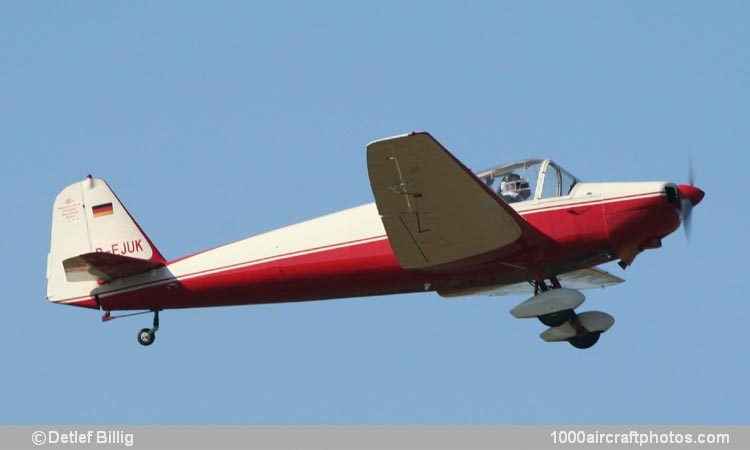08/31/2010. Remarks by Johan Visschedijk: "Dr.-Ing. Hanns Klemm (April 4, 1885-April 30, 1961) was an eminent pioneer in the development of light aircraft. In 1917 he joined Zeppelin's subsidiary Dornier and shortly thereafter his friend Ernst Heinkel took him to the Hansa-Brandenburgische Flugzeugwerke. In 1918 Klemm joined the Daimler-Motorengesellschaft at Sindelfingen, Böblingen as chief aircraft designer, for whom he designed biplanes and monoplanes, including the L 11 and L 14.
After the war he concentrated on light and economical aircraft, sometimes called Daimler-Klemm. The L 15 of 1919 was originally a glider, though later powered, but had a high wing. The L 20 of 1924 was the true precursor of the classic Klemm low-powered two-seat line of low-wing monoplanes. In December 1926 Leichtflugzeugbau Klemm GmbH was formed (adjacent to Daimler) and the L 25 was produced from 1927 with many types of engine, consolidating Klemm's now-established reputation as the 'Vater des Leichtflugzeuges' (father of the light aircraft).
The Kl 31 and Kl 32 of early 1930s were cabin types, while in the late 1930s the cranked-wing Kl 35 tourer/trainer series was produced for export and the Luftwaffe. Being renamed Hanns Klemm Flugzeugbau in August 1938, the company introduced a new type-number series and built the Kl 105, Kl 106, Kl 107 and Kl 151.
The side-by-side two-seat Kl 107 cabin tourer/trainer appeared in mid-1939, the prototype Kl 107 V1 being registered D-EXKL. It was powered by an 105 hp Hirth H.M.500A-1 engine, and its success led to the start of a production batch of twenty aircraft in 1940. However, the company was forced to contribute to military aircraft production, and only six were finished. The Klemm works were destroyed completely during the war and after the war the production of aircraft was prohibited by the allied forces.
When the ban on aircraft production was lifted in 1955, Klemm revived the type. First to appear was the Kl 107 V8 (Versuchsmachine 8, 8th prototype) that was registered D-ECAD on August 28, 1956, and flown for the first time a week later, September 4, with Karl Voy at the controls. Subsequently it was converted into the three-seat Kl 107A powered by a 90 hp Continental C90-12F engine, which was eventually replaced by an 150 hp Lycoming O-320-A2A and the aircraft was redesignated Kl 107B V1 (new c/n 101). (D-ECAD was eventually written off on August 6, 1961).
To launch the Kl 107B onto the market, a joint venture was set up between the Hanns Klemm Flugzeugbau GmbH and the Bölkow-Entwicklungen KG (formed May 1, 1956), known as the Apparatebau Nabern GmbH, in October 1957 renamed Klemm-Flugzeuge GmbH. Of wooden construction, covered with plywood and fabric, the Kl 107B went into production on November 1, 1957 and 25 (c/n 102 to 126) were produced. The joint venture was wound-up April 30, 1959, and the rights and production were taken over by Bölkow.
The improved Kl 107C received its CofA on September 29, 1959, and thirty were produced, while Bölkow flew the four-seat version BO 207 (initially designated Kl 107D) on October 10, 1960, and 88 were produced."
